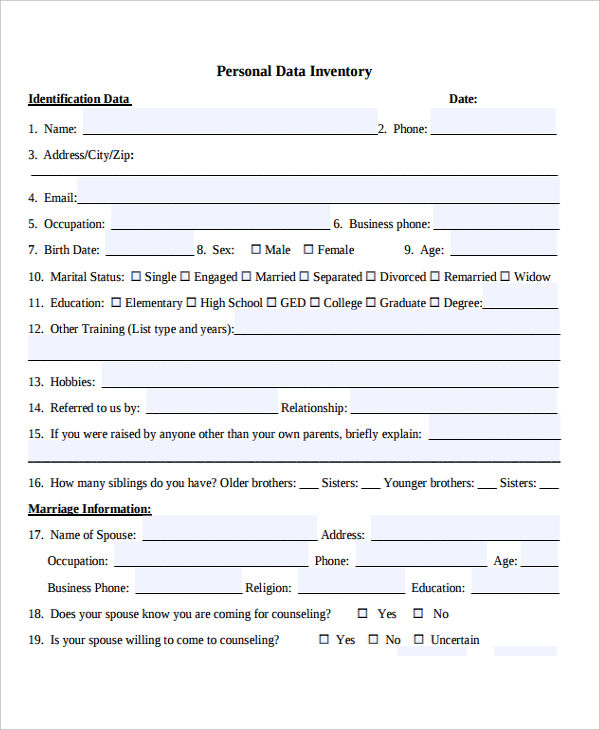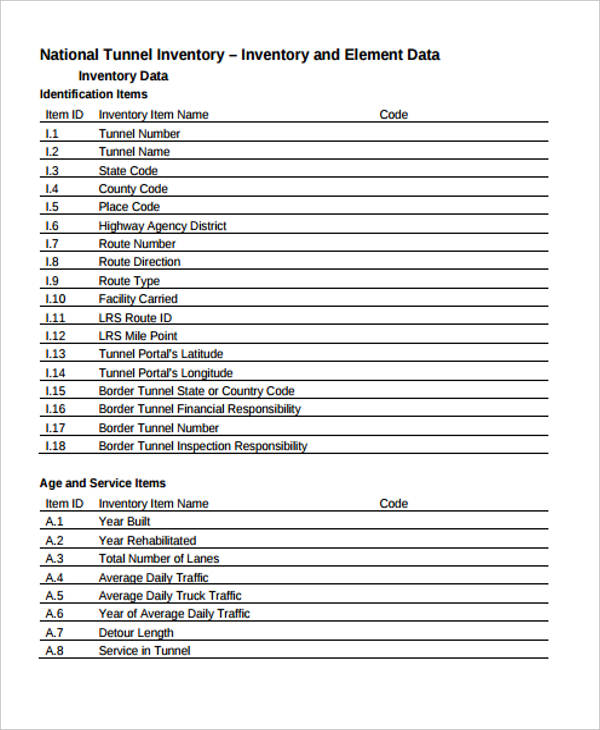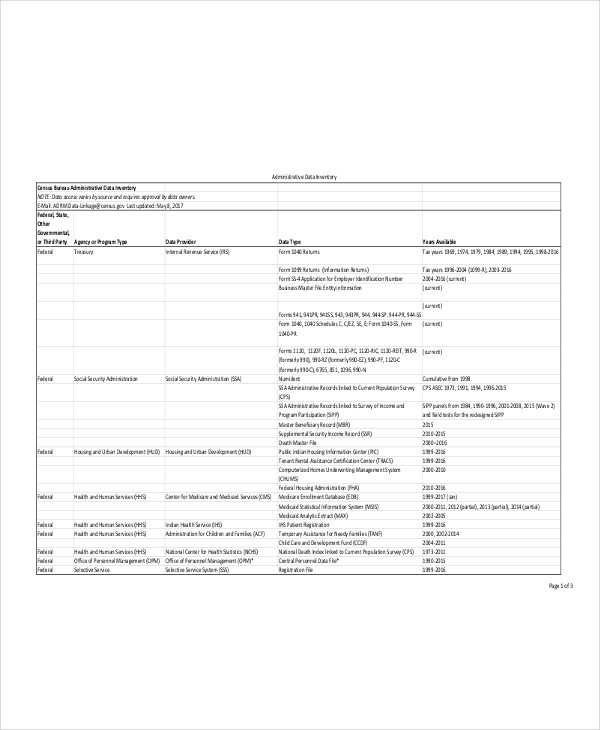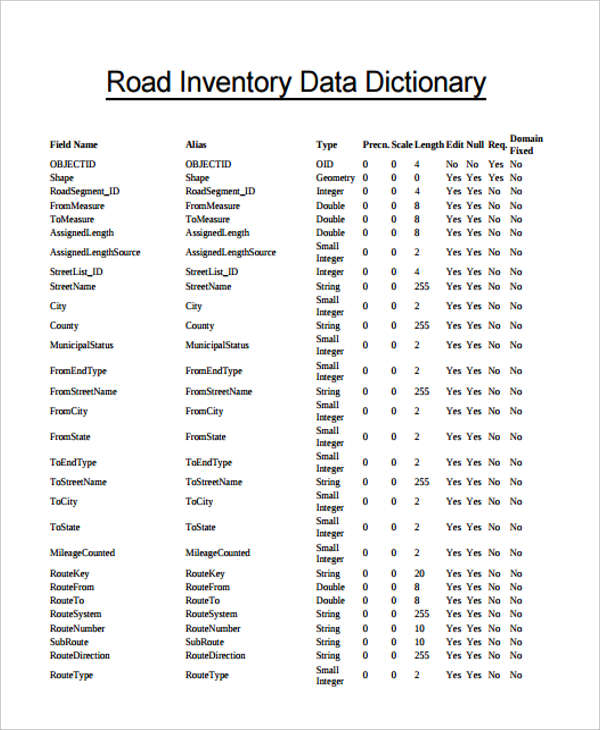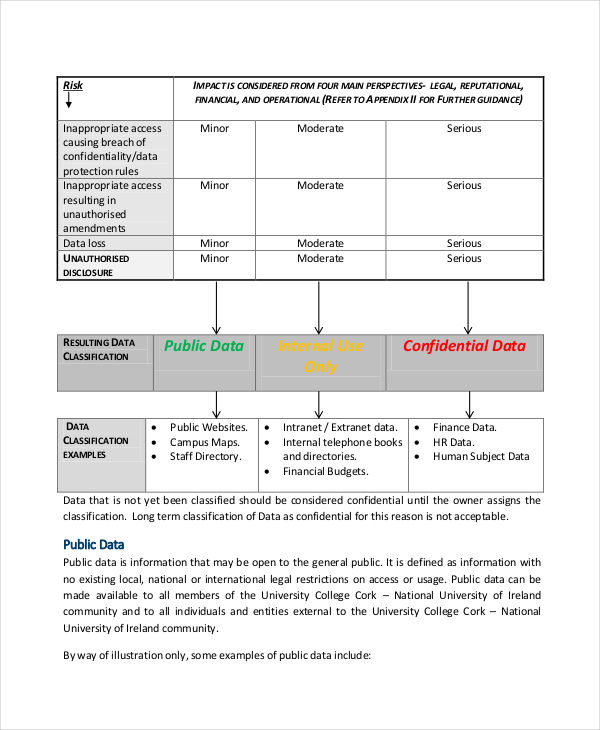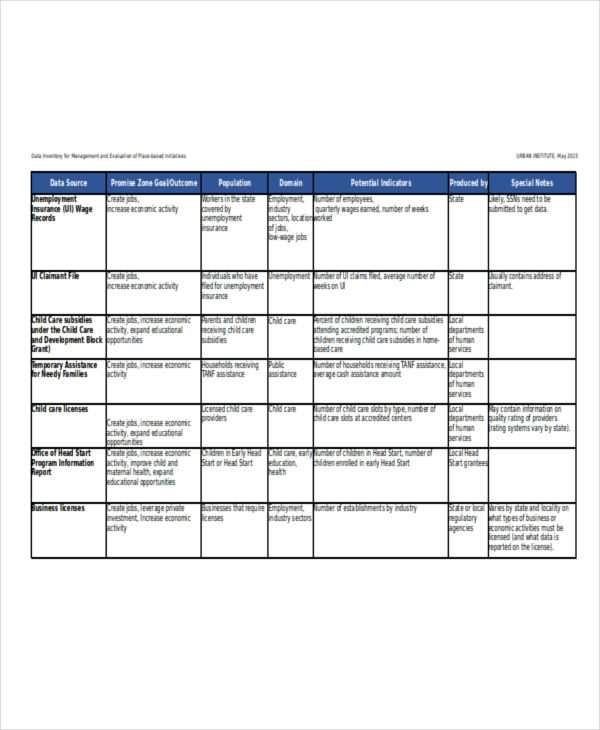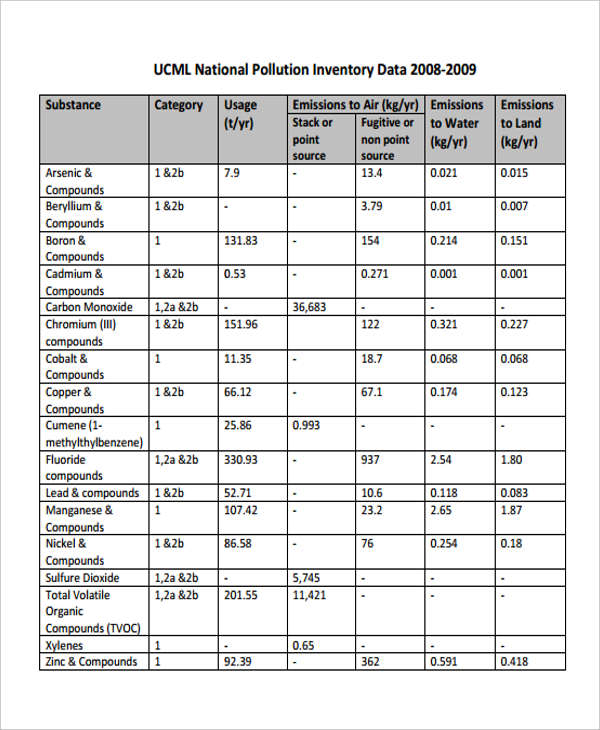Data Inventory Examples to Download
An inventory, generally speaking, is a detailed list of items or information about certain subjects or topics which needs to be taken into consideration by an individual. For example, a skills inventory contains a list of intangible skills or qualities a person possesses or must possess.
People in the business industry are familiar with the usage of inventories. In a business, an free inventory is a document that keeps track with the goods in stock, raw materials for production of new products, production workflow, manpower, and other factors which affect business operations or the business as a whole.
Personal Data Inventory
National Data Inventory
Administrative Data Inventory
Road Data Inventory
What Is a Data Inventory?
A data sample inventory, in the simplest sense, is an inventory of the data of different subjects or topics for consideration. A data inventory contains various data of the specific topics to be considered. The data found in a data inventory is usually collected beforehand, and are then classified, analysed, and interpreted in different ways. This, of course, will depend on what data were collected.
Importance of a Data Inventory
A data inventory depending on the industry presenting it, and the type of data presented can be useful in many different ways (differing from one industry to another).
But in general, a data inventory is often used to keep track of the different data to be considered, and how the changes in such data affect certain instances, individuals, or organizations.
At the same time, a data inventory can be used as a tool to plan the different ways of managing data and their importance to different industries (e.g. business, research, etc). Data in past versions of certain data inventories can be used as a comparison of the data presented on the current version of the data inventory.
Data Classification Inventory
Data Asset Inventory
Data Inventory Management
Pollution Inventory Data
How to Create a Data Inventory
Data inventories vary in their appearance, format, and content. Creating a data inventory can become confusing, especially if you don’t know the basics of what you’re doing.
So here are some basic steps in creating a data inventory (or an inventory in general) for your guidance:
- Know the goal you are trying to achieve in creating a data inventory.
- Determine what type of data inventory to create (e.g. personal data inventory).
- Gather the needed data or information. In some cases this takes time, so take your time.
- Make a list of the data to be included in your inventory.
- Consider the audience to whom you are going to present the data inventory.
- Arrange your list into an organized manner. You may arrange them in alphabetical order, input them in a table, or create different categories for your data.
- You may add instructions or descriptions as supporting details for your data—but remember to keep them simple and concise.
- You might want to include other additional or supporting information, so do not hesitate in doing so.
- You can refer to different data inventory examples and templates if you’re having a hard time.
- Find ways to improve your data inventory for the better, and make sure you make your improvements from time to time.



